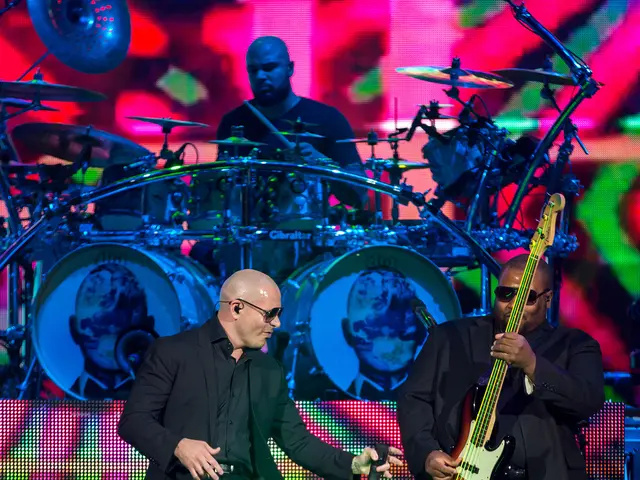Strategies Behind Top-Selling Books: Insights from Leading Charts and Proven Approaches to Enhance Book Sales
Goin' for the gold, eh? Writing a bestseller is a dream for many authors, and there's no shortage of options for where to aim your literary ambition. Most people know the Wall Street Journal, New York Times, USA Today, and Amazon's lists as popular bestseller spots. So, what makes a book one of these Golden Ticket winners? Let's dive in and see how each list works.
TheAmazon Charts & Best Sellers:
Amazon is the go-to for self-published authors trying to hit the big time. With easy accessibility and a huge platform, it's no surprise self-publishers see it as their best shot.
Amazon offers two different bestseller lists: Charts and Best Sellers, both refreshing hourly.
Amazon Charts tracks books with the most copies sold or read in formats (eBook, print, audio, and brick-and-mortar storefronts) and the most read or listened-to on Kindle and Audible. They are divided into two sections: Most Read and Most Sold, with 20 titles each for Fiction and Nonfiction.
- Most Sold: Sales data is used, including eBook, print, and audio sales, Kindle Unlimited borrows, and Audible listens, providing a comprehensive look at popular purchases and borrows across Amazon customers. Pre-orders count for the week of the book's release, boosting new books with significant anticipation.
- Most Read: Engagement data is used to reveal what books are actively being read or listened to through Amazon devices and apps. Completion rates are also considered to show books that captured readers' attention to the point of finishing.
Amazon Best Sellers is an ever-changing list based on sales volume in Amazon's massive marketplace. Categories and genres allow books to achieve bestseller status within specific niches, even if they may not be overall top sellers on the platform.
IndieBound Bestseller List:
IndieBound provides a different approach, spotlighting books from independent bookstores across the U.S. Unlike Amazon's real-time, algorithm-driven lists, IndieBound's bestseller lists are curated weekly and emphasize the collective preferences of independent bookstore customers.
USA Today Bestseller List:
TheUSA Today list gathers data from bookstore chains, independent bookstores, mass merchandisers, and online retailers to create one of the most comprehensive lists. It combines sales data for all formats (fiction, nonfiction, hardcover, paperback, and electronic books) to provide a broad overview of what's popular with readers.
Publishers Weekly Bestseller List:
Publishers Weekly uses Nielsen's BookScan service to track printed book sales in the US. BookScan's data comes from major sellers like Amazon, Barnes & Noble, Target, and independent bookstores. Unfortunately, it doesn't track online sales outside a store, limiting its potential for self-published authors who use print-on-demand services.
Wall Street Journal Bestseller List:
The Wall Street Journal's Bestselling Books list reflects book popularity and sales performance in the U.S. The list covers a wide range and includes factors beyond simple sales numbers. To make it on this list, you might need to sell between 3,000 to 5,000 copies a week.
New York Times Bestseller List:
The granddaddy of all bestseller lists, the New York Times has been around since 1931. It covers various categories, including fiction, nonfiction, and sometimes specific genres or formats. The process and criteria for selecting books are nuanced, including factors beyond just sales numbers.
So, now you know the ins and outs of the big bestseller lists. And what about you? What do you need to do to make your book a bestseller? Here are a few tips:
- Write a dynamic story: Your book needs to be compelling and engaging, no matter the genre. Put in the time to make it shine.
- Design an eye-catching cover: A good cover catches the reader's eye. Take the time to create a cover that stands out from the crowd.
- Write an enticing book description: Think of your book description as your sales pitch. Make it appealing to grab a reader's attention.
- Know your audience: Tailor your marketing strategy to your target audience. Understanding their preferences will help ensure your marketing efforts are effective.
- Build your author brand: Establish a strong online presence and engage with readers to build a loyal following.
- Generate buzz with early reviews: Build anticipation for your book by securing early reviews from bloggers, influencers, and reviewers.
- Offer pre-orders: Encourage readers to pre-order your book to generate early sales. Consider offering incentives or exclusive content to sweeten the deal.
- Understand retailer algorithms: Optimize your book’s visibility by using relevant keywords, understanding Amazon's ranking algorithms, and encourage readers to leave reviews on platforms like Amazon.
- Invest in marketing and promotion: Use a mix of advertising strategies, cross-promotions, and collaborations to reach potential readers and boost sales.
- Consider pricing strategies: Pricing your book competitively can influence sales. Research prices of similar titles to determine a fair and competitive price.
Remember, getting on bestseller lists takes hard work, a bit of luck, and continuous marketing efforts. Best of luck on your literary journey!
Want to self-publish? Check out our website to get started.
Sources:1. "How the Kindle Best Sellers list works" by Paolo Carnasciali on Digital Book World2. "Indie Bound Explained: IndieBound Bestseller Lists, IndieBound Indie Next List, and More" byetymaichelp on BookBub3. "How to Sell More Books: The 2019 Marketing & PR Handbook for Authors" by The Book Designer4. "How to Get on the New York Times Bestseller List" by Caitlin Hamilton Summie on Medium5. "Mastering Amazon Ads: A Comprehensive Guide for Indie Authors" by Joanna Penn on The Creative Penn
In your literary quest, consider the Amazon Charts and Best Sellers as valuable platforms to showcase your work. Amazon Charts, refreshing hourly, tracks books based on copies sold, read, or listened-to across various formats and devices, showcasing both the Most Read and Most Sold titles in Fiction and Nonfiction.
Moreover, your book's aesthetic appeal is vital. Cater to various audiences by dedicating time to designing an eye-catching cover that stands out on Amazon's vast marketplace.








